Is it safe to run with knee arthritis? Well, running with arthritic knees is still possible. But you have to take careful precautions. And you should follow these tips to stay active without causing joint damage.
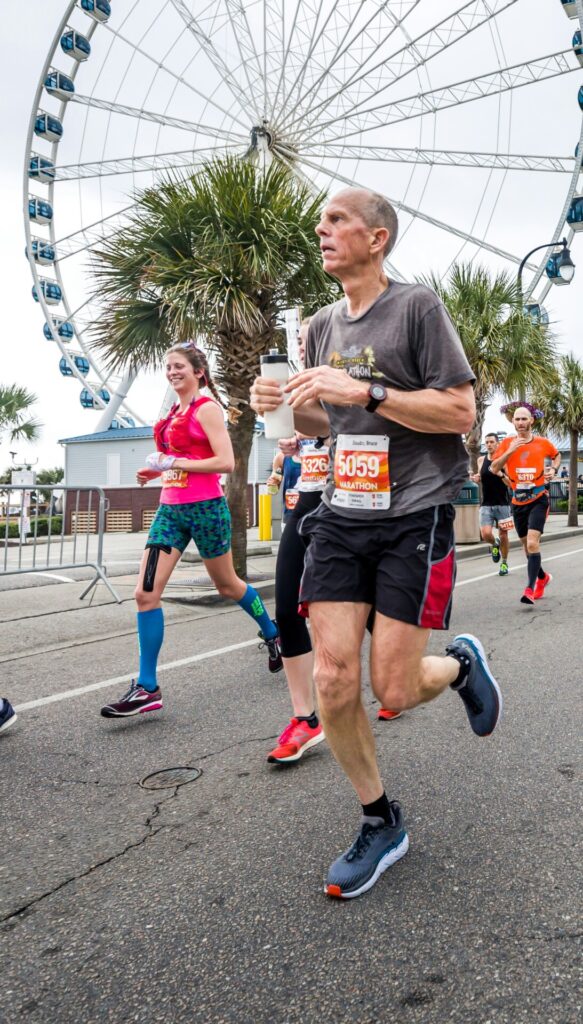
Running with Arthritic Knees: Start Slow
When you have knee osteoarthritis, joint pain could be a common concern. However, when you start running, you’ll have to listen to your body and decide if the discomfort you may feel is mild and associated with exercise, or if it’s sharp, suggesting you’ve suffered an injury or are causing joint damage.
Also, in order to prevent damage, you should slowly ease your way into a new running workout. Begin by moving at a mild pace, and don’t try to go too far. Then, as you get used to running with arthritis, you should be able to run farther and faster. And, in the process, you may even experience some knee pain relief. (More on that below.)
Choose Your Shoes Wisely
Running with arthritis demands appropriate, supportive foot wear. Choose pairs with plenty of cushioning to reduce the impact on your knees. Get a professional, in-store fitting. And make sure to mention your knee osteoarthritis when asking for help selecting your running shoes.
Consider Cross-Training, Too
If you’re running with arthritic knees, that should not be your only form of exercise: cross training will also be important for your health. Be sure to incorporate weight bearing exercises to take pressure off your knee joints by strengthening the muscles that support them. And try to engage in other, low-impact, forms of exercise like cycling or swimming, to help your joints and muscles recover in between higher-intensity training sessions.
Cycling is also an excellent exercise choice because the pedaling motion can lubricate the joints, helping reduce pain and improve your range of motion. But swimming is also a great option, since working out in the water will take pressure off your joints entirely.
Knee Pain Relief in Dallas and Houston
Is running with arthritic knees becoming too difficult due to joint pain? Do you want to find relief without surgery? At the Texas Knee Institute, we offer genicular artery embolization (GAE), a minimally invasive procedure designed to relieve arthritis pain while delaying or avoiding knee replacement surgery.
But what is GAE, exactly? This procedure reduces knee pain caused by osteoarthritis because it targets inflammation in your synovium (joint lining). It is a procedure that doesn’t require general anesthesia or an overnight hospital stay, and comes with an easier recovery period when compared to surgery. Want to see if you’re a GAE candidate? Request a consultation [/ga-appt-link] with our specialists in Texas, and we’ll review your treatment options when you come into the office.
At the Texas Knee Institute, our interventional radiologists in Houston and Dallas ease arthritis pain in the knee by performing Genicular Artery Embolization (GAE.) This is a minimally invasive procedure that reduces both pain and inflammation by limiting the flow of blood to your knee’s synovial lining. But how effective is this non-surgical procedure at relieving your knee pain due to osteoarthritis? Well, the numbers are in, and they’re pretty promising!
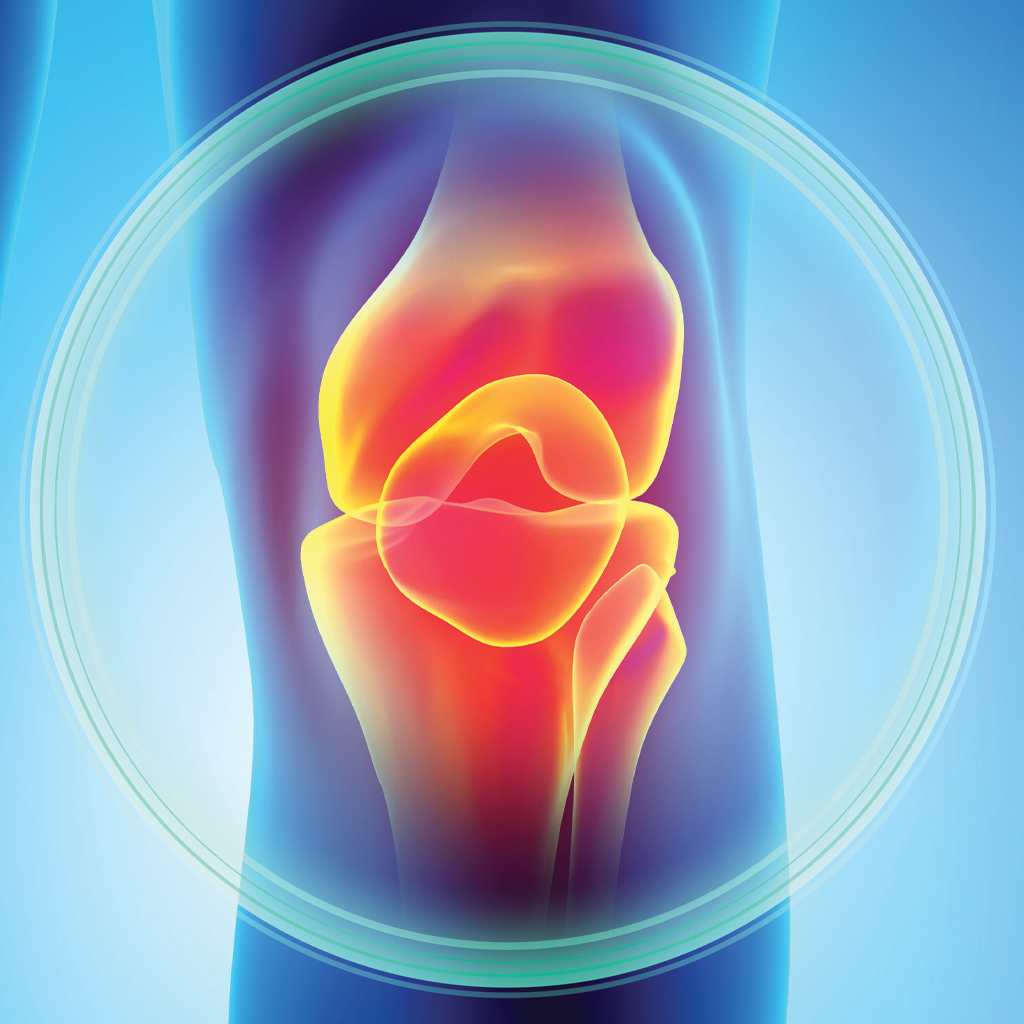
Does GAE Ease Arthritis Pain in the Knee? Check out These Stats!
Interventional radiology is a relatively new field of medicine. As such, long term data on the efficacy of GAE for reducing the pain of knee osteoarthritis is somewhat limited. But the evidence we do have is very promising.
At the Society of Interventional Radiology’s 2021 Annual Scientific Meeting, researchers presented findings on how well GAE was able to ease arthritis pain one year after patients underwent the procedure. The study followed 40 adults between the ages of 40 and 80 who needed knee pain relief due to mild to moderate osteoarthritis. Here’s what they found.
To begin with, one year after having GAE, patients enjoyed a 63% decrease in their personal pain scores. Moreover, their WOMAC osteoarthritis index scores had decreased by 60% at the one-year, post-procedural mark. (The WOMAC, or Western Ontario and McMaster Universities Arthritis Index, evaluates progression of hip and knee osteoarthritis by assessing stiffness, pain and ability to function physically on a daily basis. A lower score reflects improved mobility due to reduced pain and stiffness.)
Even better? None of the patients included in the study experienced major side effects. And the few who did, the adverse events were minor and mostly self-resolving. Plus, in light of the fact that the procedure was a technical success for 100% of the participants, lead study author Siddharth A. Padia, MD, FSIR says that, with GAE, interventional radiologists now have “the potential to completely disrupt and change the way patients are treated with knee osteoarthritis.”
How to Find Osteoarthritis Knee Pain Relief in Houston and Dallas
Want to ease arthritis pain without subjecting yourself to an invasive procedure like knee replacement surgery? Genicular Artery Embolization at the Texas Knee Institute could be the procedure you’ve been waiting for. And, to find out if that’s the case, simply click here to request a consultation click here to request a consultation click here to request a consultation with our experts.
If you’re suffering from osteoarthritis knee pain, you may be exploring treatment options, and choosing between genicular artery embolization vs knee surgery. But what’s involved in each of these procedures? And how can you choose the best option for your needs? Here’s what you need to know.

Knee Replacement for Osteoarthritis Pain
When you choose knee replacement surgery, your doctor will remove damaged bone and cartilage from your kneecap and some surrounding structures, replacing it with an implanted artificial joint. Constructed from plastic or metal, the replacement joint is designed to replicate the movements of your natural knee joint.
Due to the invasive nature of the procedure, you’ll need to go under general or regional anesthesia during the surgery, which typically lasts between one to two hours. Afterward, the incision site will be closed with staples or sutures, and your wound will be dressed carefully. During your recovery period, you’ll have to follow wound care instructions as well as all other post-operative directions from your doctor.
Genicular Artery Embolization
How does genicular artery embolization vs knee surgery compare in terms of what to expect during your procedure? Unlike surgery, genicular artery embolization (GAE) is a minimally invasive procedure designed to reduce knee osteoarthritis pain by decreasing the volume of blood flow that reaches the lining of your knee. Also lasting between one and two hours, GAE is an outpatient procedure performed with mild sedation rather than general anesthesia. During the procedure, our interventional radiologists insert a small catheter into your artery, guiding it to areas of inflammation with the help of X-ray imaging. Once in position, we inject tiny particles through that catheter; these block blood flow and reduce inflammation, providing osteoarthritis knee pain relief in the weeks and months following your procedure.
Genicular Artery Embolization Vs. Knee Replacement: What to Expect from the Recovery
If you undergo a knee replacement, you’ll likely need to stay in the hospital for up to three days afterward. And, your full recovery could last between 6 months and a year, though you’ll be able to return to your normal activities about six weeks after surgery. The initial healing period is likely to be painful, and many patients require physical therapy following their surgery.
In contrast, a genicular artery embolization recovery is far shorter. Most patients go home on the same day as their procedure, resuming light activities as early as one week afterward. Some discomfort is normal in the first few days following GAE, however you could start to experience knee pain relief as soon as two weeks after the procedure, with results continuing to improve from there.
Choosing the Best Treatment for Osteoarthritis Knee Pain
If you’re considering genicular artery embolization vs knee surgery to relieve your arthritis pain, here are some things to consider. If you choose knee replacement surgery, you should experience lasting relief. But you will also need to stay in the hospital and go through a more intense period of rehabilitation—along with a higher potential for complications. Plus, you must be physically healthy enough to undergo an invasive surgical procedure.
However, if you choose GAE at the Texas Knee Institute, you can enjoy months or years of knee pain relief and improved mobility without undergoing surgery or dealing with hospital stays. The risk for complications is minimal, and you can undergo GAE several times in order to delay or avoid knee replacement surgery. Ready to see if you’re a candidate for GAE in Texas? Click here to request a consultation Click here to request a consultation Click here to request a consultation
Knee pain due to osteoarthritis can make it difficult to enjoy an active life. In the past, many people had to treat this pain with total knee replacement surgery. But this procedure is expensive, invasive, requires a long recovery period, and doesn’t always provide the relief you need. Today, however, you can find osteoarthritis knee pain relief with genicular artery embolization (GAE). This minimally-invasive procedure effective reduces or eliminates your pain without requiring general anesthesia or overnight hospital stays. Want to learn more? Keep reading to discover the ins and outs of this alternative to knee surgery.
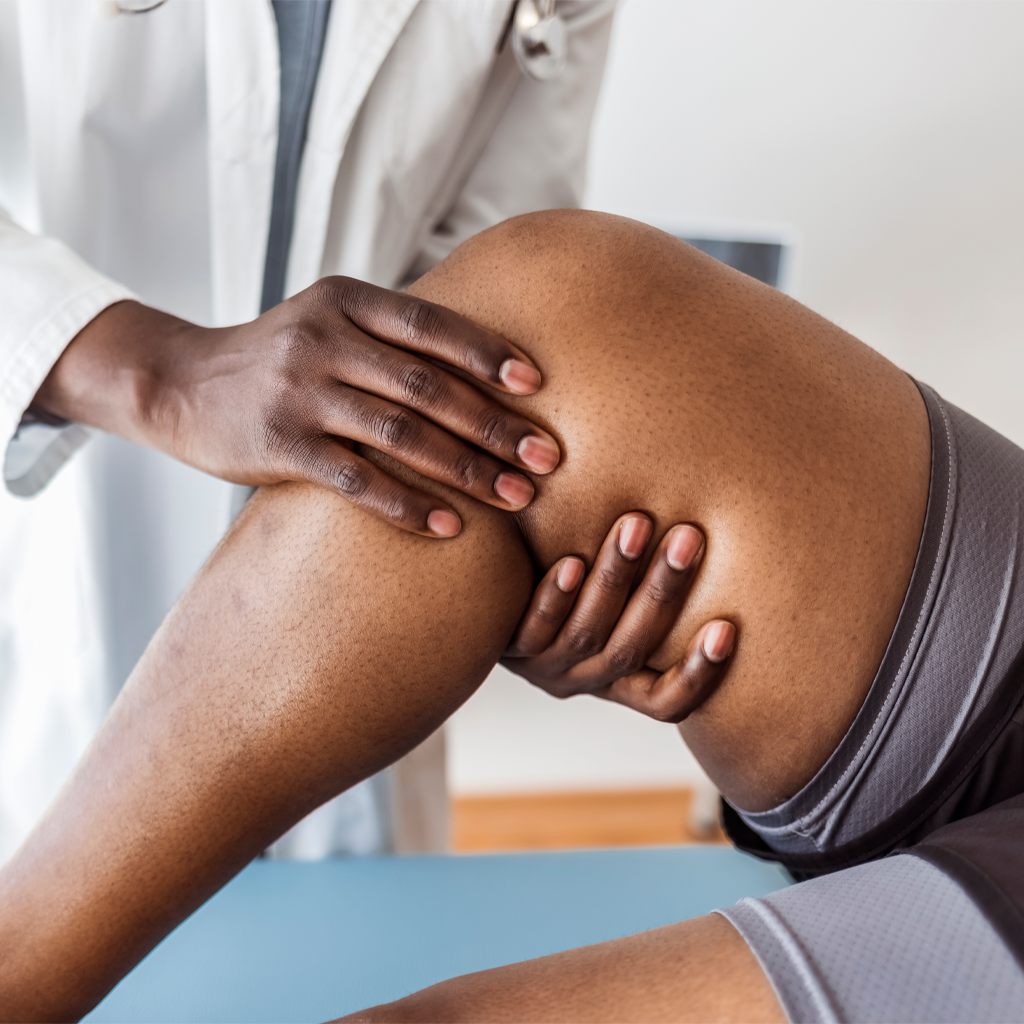
What is Genicular Artery Embolization for Knee Pain?
GAE is a minimally invasive knee procedure that offers an advantageous alternative to knee surgery for many patients. First, it’s a non-surgical procedure that carries a minimal risk for complications, making it an ideal knee pain treatment for those who prefer to avoid surgery or who aren’t able to undergo invasive procedures. Moreover, it is less expensive than surgical procedures, and typically covered by insurance. After GAE, you can expect a much faster recovery time than you’d deal with following a surgical procedure. Plus, by addressing one of the root causes of knee pain due to osteoarthritis—inflammation—it is still able to effectively reduce your discomfort and improve your quality of life.
GAE Procedure: Taking a Closer Look
When you undergo Genicular Artery Embolization, we inject an embolic agent into a catheter that’s directed to reduce blood flow to the genicular arteries around your knee. Afterward, inflammation is reduced, and most patients report knee pain relief along with improved mobility and an overall better quality of life.
Recovering from GAE
Most people can resume normal activities within days of undergoing genicular artery embolization. Knee pain relief after GAE will initially start improving 4-6 weeks after the procedure, with results further improving over time. Plus, because the procedure is less invasive than surgery, post-GAE discomfort should be minimal, and most patients can manage discomfort with over-the-counter medications.
Do you need relief from the knee pain of osteoarthritis, but you want an alternative to surgery? GAE in Texas could be the option you’ve been seeking. Simply click here click here click here to request a consultation at the Texas Knee Institute, and we’ll review your candidacy for genicular artery embolization.
If you are living with knee osteoarthritis, it’s important to understand that this disease is progressive. And, as the disease advances, symptoms will worsen and mobility in your joints may be compromised. But what are the stages of knee osteoarthritis? And how can you find relief from painful symptoms? Here’s what you need to know!
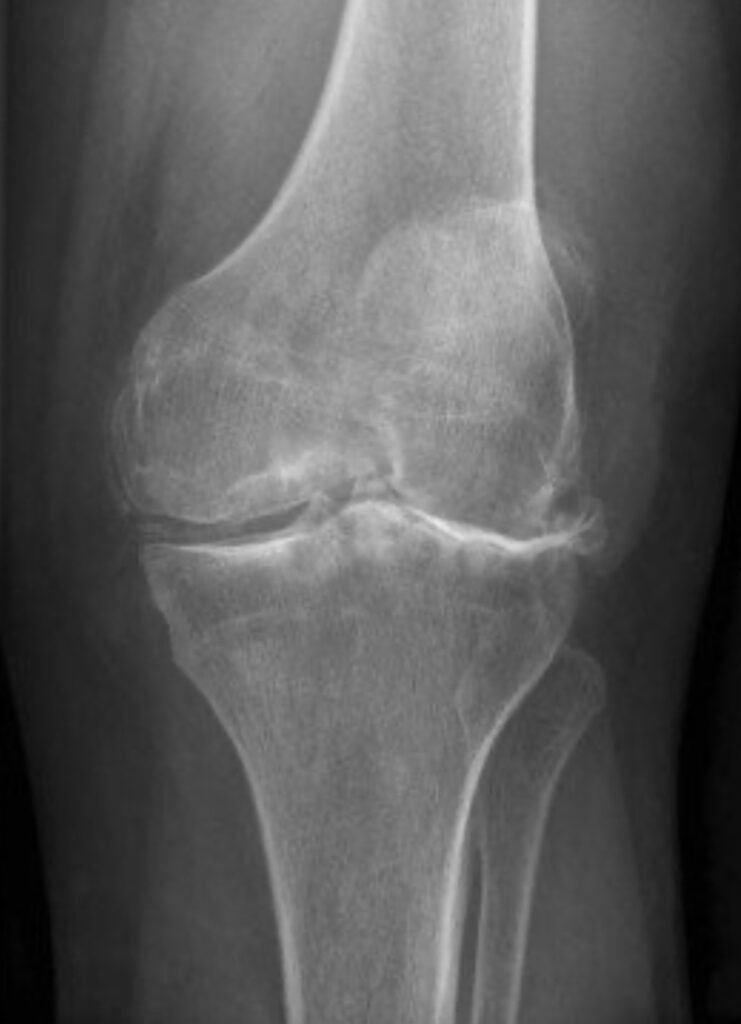
What is Knee Osteoarthritis?
Knee osteoarthritis is a disease that can affect your joint function and mobility. As we mentioned above, the disease is progressive and has no cure. However, there are stages of disease. And if you intervene before mobility is compromised, you may be able to stay active and delay or prevent further progression.
Stage 0: A Healthy Knee
If you show no symptoms of knee osteoarthritis, and there is no evidence of joint damage, your disease is classified as Stage 0. At this point, no treatment or intervention is recommended.
Minor Knee Osteoarthritis Pain: Stage 1
At this stage, your knee joints may show minor signs of wear and tear. You may also have slight growths of bone spurs on your joints, but you’re unlikely to experience pain. Still, if you have risk factors for arthritis, engaging in exercises for knee health could help prevent progression into stage two.
Stage 2
Here, we will notice more signs of bone spur growth when we x-ray your knee joints. Typically, the spaces between your joints will still appear normal, however, patients with stage 2 knee osteoarthritis are likely to experience symptoms such as joint pain and stiffness, especially after exercising, sitting for extended periods, or when you first wake up in the morning. Stage 2 patients may also start to experience cartilage break down. For some patients, progression and pain may be managed with lifestyle measures, including wearing braces or supports and focusing on strength training and exercise. However, some people will need additional interventions to find relief.
Moderate Knee Osteoarthritis: Stage 3
At this point, we will detect obvious cartilage erosion between your bones; the gap between bones will also have narrowed. At this point, inflammation in your joints will leave you experiencing frequent pain and stiffness. You may also notice that your knee makes a popping noise when you walk. Some stage 3 patients can manage their pain with medications. But, again, additional interventions may be necessary.
Stage 4
This is a severe stage of knee osteoarthritis—at this point of disease progression, your joint will be stiff because the cartilage has worn down significantly, leaving very little space between bones. Your synovial fluid that lines your knee joint will also decrease, so that you experience pain and friction when you try to move your joint. At stage 4, doing something as simple as trying to walk down the stairs could cause excruciating pain. As such, patients who reach this stage of disease progression are often forced to seek surgical treatments in order to relieve their discomfort. However, if you choose to seek help for knee osteoarthritis when you are still in stage two or three, the experts at the Texas Knee Institute can help relieve your pain with a non-surgical medical procedure.
Genicular Artery Embolization for Stage 2 and 3 Knee Osteoarthritis Relief
Genicular artery embolization (GAE) is a non-surgical procedure that can slow knee osteoarthritis progression. Recommended for stage 2 and 3 osteoarthritis patients who have not found relief from other, non-surgical interventions, it diminishes blood flow to the lining of your knee, reducing pain, inflammation and other symptoms. After undergoing GAE, you should be able to walk within two to three hours. Most patients will return to normal activities the day after the procedure, with symptom reduction becoming apparent within weeks of the procedure.
Ready to find relief for your arthritis symptoms, without the need for surgery? We’re here to help. Click here to request an appointment Click here to request an appointment Click here to request an appointment at the Texas Knee Institute.
Can non-surgical treatment for knee pain relieve the discomfort of osteoarthritis? Many people suffer from the discomfort of osteoarthritis of the knee. And they want relief, but they would prefer to avoid surgery. Or, their bodies can't tolerate such an invasive surgery. But how effective can the relief be if you avoid total knee replacement? Here's what you need to know.

Effectiveness of Non-Surgical Treatment for Knee Pain
In the past, non-surgical treatment options for osteoarthritis pain involved management with lifestyle changes and medication. And, while these methods were effective for those with mild to moderate arthritis pain, those with more serious conditions would need to explore surgery for relief, or choose to live with the pain, stiffness and limits on mobility.
Today, however, there are minimally invasive procedures such as Genicular Artery Embolization for knee osteoarthritis relief. And, according to new research presented at the Society of Interventional Radiology's annual meeting, the procedure delivers significant pain reduction for those with knee pain caused by osteoarthritis. Moreover, the first-of-its-kind study revealed that the procedure is particularly effective for adults aged 50 and older.
In revealing these results, Dr. Kaitlin Carrato of MedStar Georgetown University Hospital said, "We know this treatment has clear benefits in reducing pain and improving the ability to do everyday activities for patients. But now that we know it's particularly helpful for those over 50 years old, it may mean that those with chronic pain conditions, like arthritis, would benefit more from this treatment than patients suffering acute pain, such as an injury."
Ready to explore non-surgical treatment for knee pain? Want to relieve the discomfort of osteoarthritis without overnight hospital stays or a total knee replacement? We're ready to answer all your questions and review your candidacy for the GAE procedure. Simply click here to request an appointmentclick here to request an appointmentclick here to request an appointment.
Walking backward is a hot new fitness trend. Experts say that it helps reduce your risk for running injuries while mixing up your training routine. But can it help prevent or relieve the knee pain of osteoarthritis? here's what you need to know!

Walking Backward and Osteoarthritis Pain
When you're living with osteoarthritis knee pain, you may experience symptoms such pain, stiffness, swelling and limits on your range of motion. Now, many people will seek a medical procedure to relieve the discomfort of these symptoms. And, certainly, an intervention like Genicular Artery Embolization can relieve arthritis pain without the need for invasive knee replacement.
However, for those who are looking to manage their condition with lifestyle measures, walking backward may offer some important benefits, according to the experts. Why is that the case? When you walk backward, you use different muscles than when you propel yourself forward. Immediately, that can relieve some of the pressure on your sore, swollen joints.
Moreover, when you walk backward, you give more engagement to the quad muscles. This can stretch out the knee muscles, once again alleviating pain and also improving mobility. Finally, backward walking involves more thinking than moving forward, and this can help with balance and brain engagement as you age. Of course, this form of exercise can also come with a higher risk of tripping and falling. So you should practice the movement indoors, at a slow pace, and supervised by a friend or loved one to reduce your hazard risk.
When Walking Backward Doesn't Provide Enough Relief
If you're suffering from mild to moderate knee arthritis, lifestyle measures may provide sufficient pain relief. But if your condition is more severe, and you want relief without surgery, we encourage you to explore genicular artery embolization in Texas. Click here to request an appointmentClick here to request an appointmentClick here to request an appointment!
When you have knee pain due to arthritis, your doctor may suggest trying osteoarthritis knee exercises. While there is no cure for arthritis, regular exercise can help manage stiffness and preserve mobility. However, for more lasting relief, you may need to seek medical intervention.

What are the best osteoarthritis knee exercises?
While exercise can't cure arthritis, it can help you build strength, move with greater ease and relieve pain. Regular exercise can also help you maintain a healthy weight, improve your balance and even sleep better at night. Now, before starting a new exercise routine, make sure to clear your proposed activities with a doctor. Then, consider trying some or all of these osteoarthritis knee exercises:
- Daily stretching
- Weight-bearing activities with resistance bands, hand weights or weighted machines, ideally performed every other day
- Moderate, joint-friendly cardiovascular exercises such as swimming, walking or biking
- Yoga or tai chi routines that can help improve balance and posture while reducing tension
Tips for exercising with osteoarthritis of the knee
When you are beginning a new exercise routine and dealing with the pain of osteoarthritis in your knee, start slow and listen to your body. If working out with a trainer or taking a group fitness class, make sure to inform the instructor about your arthritis. And always listen to your body: stop and rest if any exercise causes you pain.
Additionally, any osteoarthritis knee exercises should be low impact. Before exercising, apply 20 minutes of gentle heat (warm towels or a warm shower both work) to your affected joints. And, after completing a workout, ice your joints for up to 20 minutes to address any possible swelling.
Non-surgical relief for knee osteoarthritis
If you're hoping to manage your pain with osteoarthritis knee exercises, you'd probably like to avoid surgery. And, even when lifestyle measures fail to manage your arthritis-related knee pain, you can find meaningful relief with Genicular Artery Embolization (GAE) in Texas.
This minimally invasive procedure relieves pain and inflammation and helps you delay or avoid knee replacement surgery. Performed by our interventional radiologists in Houston and Dallas, GAE may also help prevent disease progression for arthritis patients. Ready to see if you're a candidate for GAE? Click here to request an appointmentClick here to request an appointmentClick here to request an appointment today!
What's the best way to treat arthritis in knee? While there are many ways to relieve knee pain due to arthritis, one option is emerging as optimal because it is a lasting, non-surgical treatment for osteoarthritis of the knee. Called genicular artery embolization, or GAE, it's a minimally invasive procedure that reduces arthritis-related knee pain by reducing blood flow to the inflamed lining of the knee. But how does it work, who's a candidate, and why is it a great alternative to knee surgery? Here's what you need to know!

Best Way to Treat Arthritis in Knee: What are the Options?
Remember, knee osteoarthritis is a progressive, degenerative condition. As such, you need to seek some kind of treatment, or you'll experience disease progression and worsening symptoms. Now, some patients can treat arthritis in the knee simply by maintaining an optimal weight, engaging in regular exercise and following a heart-healthy diet. However, many patients will still experience pain, stiffness and other disruptive symptoms unless they seek medical intervention.
Until recently, the main treatment option involved surgical knee replacement. But many people want knee pain relief without surgery, while others can not tolerate surgical interventions. In the past, that meant they were forced to suffer from arthritis pain without relief. Today, though, they can choose to undergo GAE, an alternative knee replacement that is the best way to treat arthritis in the knee without surgery.
What is GAE?
GAE is a surgical alternative for relieving symptomatic osteoarthritis of the knee. During this procedure, our interventional radiologists insert a small catheter into your femoral artery, usually via a small puncture made in the area of your groin. We'll then guide the catheter to your genicular arteries, assisted by advanced X-ray imaging. Once the catheter reaches its target, we'll deposit tiny coils into the arteries, thereby decreasing and reducing osteoarthritis knee pain and inflammation.
Now, not everyone is a candidate for genicular artery embolization. But many have found that this is the best way to treat arthritis in knee without surgery. Ready to see if this is your best pathway to relief? Click here to request an appointmentClick here to request an appointmentClick here to request an appointment!
If you've been suffering with osteoarthritis of the knee, but want less invasive pain relief, you may be searching for knee replacement alternatives. Thankfully, due to advancements in the medical field, there are many ways to relieve your pain without surgery. Here are the procedures your need to know about.
Knee replacement alternatives: genicular artery embolization (GAE)
GAE is one of newest treatment options if you're seeking non-surgical knee replacement alternatives. Performed by our Interventional Radiologists at the Texas Knee Institute, this procedure works by restricting blood flow to the inflamed lining of your affected knee(s). Afterward, inflammation reduces, reducing or eliminating your knee pain. In fact, this 2020 study revealed that the procedure effectively reduces moderate to severe knee pain caused by osteoarthritis. Plus, by choosing to undergo GAE, you may prevent arthritis progression and help preserve your mobility.
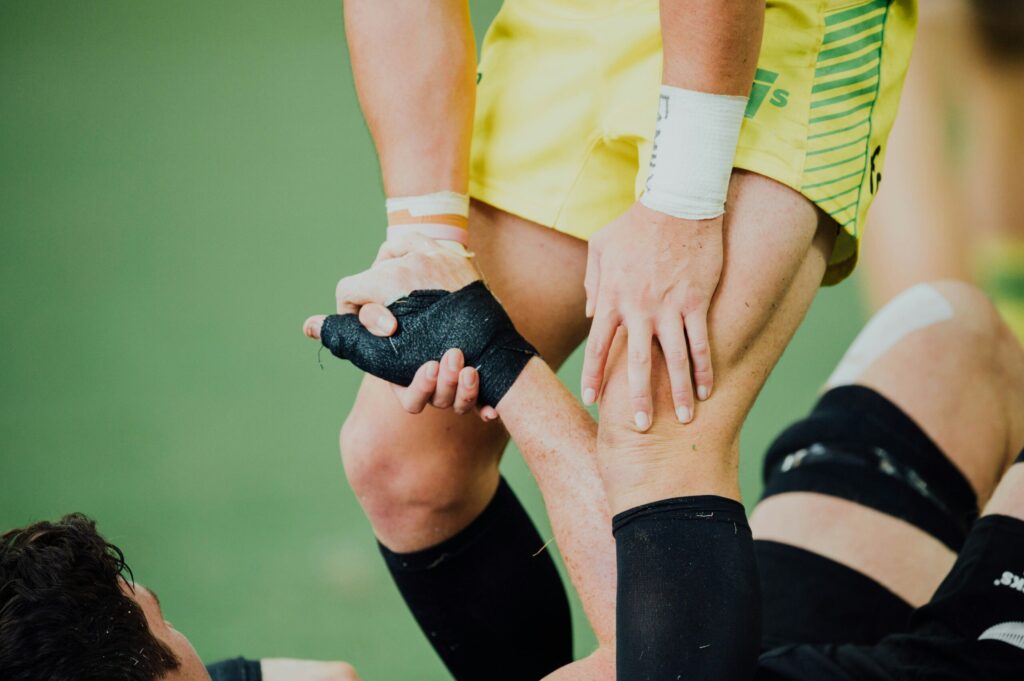
Injections to Relieve Osteoarthritis Knee Pain
Other knee replacement alternatives involve injections to your affected joint area. Some physicians recommend injecting hyaluronic acid to your inflamed knee joint, in order to reduce pain by lubricating the area and offering additional shock absorption. However, due to limited research on its effectiveness, the Arthritis Foundation does not currently endorse this treatment option.
Another option making headlines is dextrose solution injections for osteoarthritis knee pain. Touted as a form of regenerative medicine due to its potential to reduce pain and stiffness by directing healing blood flow to your knee, this option also lacks research on its effectiveness. As such, it is also not endorsed by the Arthritis Foundation.
Finally, for patients with mild to moderate arthritis knee pain, Platelet Rich Plasma (PRP) injections may relieve pain and improve mobility for up to one year. The treatment works by injecting the platelet-rich portion of your own blood into your affected knee, helping promote healing and healthy new cell growth. While patient reported results are positive, we still lack scientific research into the safety and efficacy of this knee replacement alternative.
Scientifically Backed Knee Replacement Alternatives
Want to relieve arthritis knee pain without surgery? But looking for knee replacement alternatives who's efficacy can be proven by science? Click here to request an appointmentClick here to request an appointmentClick here to request an appointment at the Texas Knee Institute to see if you're a candidate for GAE!







